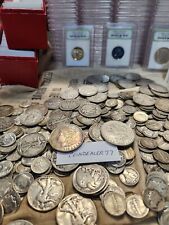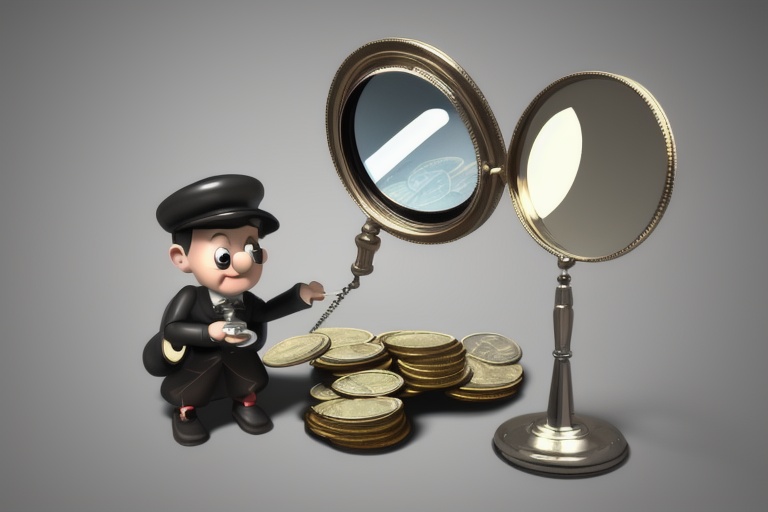As a seasoned coin collector and dealer, with three decades of expertise under my belt, it's my pleasure to delve into the intricacies of coin collecting and coin valuation. This rich and varied hobby is a never-ending journey of discovery, where a keen eye for detail and a hunger for knowledge can turn an ordinary pastime into a lifelong passion. Through this blog, you will get to explore everything from the foundational principles for newcomers to nuanced strategies for assessing coin values—essential knowledge for both avid collectors and curious enthusiasts. We will unpack market trends, offering insights that will help you make informed decisions whether you are enhancing your personal collection or considering investment opportunities.
As a seasoned coin collector and dealer, with three decades of expertise under my belt, it's my pleasure to delve into the intricacies of coin collecting and coin valuation. This rich and varied hobby is a never-ending journey of discovery, where a keen eye for detail and a hunger for knowledge can turn an ordinary pastime into a lifelong passion. Through this blog, you will get to explore everything from the foundational principles for newcomers to nuanced strategies for assessing coin values—essential knowledge for both avid collectors and curious enthusiasts. We will unpack market trends, offering insights that will help you make informed decisions whether you are enhancing your personal collection or considering investment opportunities.
Understanding the Coin Market
The market for coins is as diverse as it is dynamic. Various factors influence the value of coins, including rarity, condition, historical significance, and even market demand. These factors can interact in complex ways, creating a landscape that is constantly in flux. Evaluating coins is both an art and a science; factors such as mint year, mintage numbers, and grade can greatly affect a coin's value. Market valuations can change rapidly as new discoveries are made and as the interests of collectors evolve.
Coin Collecting for Beginners
If you are new to coin collecting, you may be wondering where to start. Building a coin collection can be as simple as saving interesting coins found in everyday change or as complex as tracking down elusive pieces from around the world. As you embark on your collecting journey, learn the basics of coin grading, storage, and handling. Knowing how to maintain the condition of your coins is crucial, as it is one of the key determinants of value. Begin by deciding on a focus for your collection, such as a particular series, period, or theme. Setting clear goals will guide you as you grow your collection strategically over time.
The Importance of Coin Grading
Coin grading is a process used to determine the condition of a coin, which is instrumental in assessing its worth. Coins are graded on a scale, with different grading systems used across the globe. In the United States, the Sheldon Scale, which ranges from 1 to 70, is the most commonly used. A grade of 70 indicates a coin in perfect mint condition, while lower numbers represent varying levels of wear and tear. Because the grade of a coin can significantly influence its market value, serious collectors often invest in third-party grading services to ensure impartiality and enhance the credibility of their collections.
Coin Values Over Time
Understand that coin values are not static; they can change with time, influenced by the economy, historical events, and shifts within the collector community. For example, coins from eras of historical significance, such as those struck during the early years of the United States Mint, often command higher prices due to their heritage and rarity. Moreover, precious metal markets can affect the values of bullion coins, with prices fluctuating based on gold and silver spot prices.
Market Trends and Predictions
Staying abreast of market trends is key to the savvy collector. This involves monitoring auction results, keeping tabs on which coins are hot on the market, and forecasting potential future values. Trends can inform collectors on what to buy, when to sell, and what might be the next big find. However, predictions are not an exact science, and market forces can be unpredictable. Collectors must use a combination of research, industry knowledge, and their own instincts to navigate the market successfully.
Resources for Collectors
Beyond individual research and expertise, leveraging resources such as reputable coin dealerships, established auction houses, and trustworthy online platforms can provide a wealth of information. These resources offer opportunities to buy, sell, and learn from the experiences of others within the coin collecting community. They can also help in tracking global market trends and the values of specific coins.
Making Transactions
Whether buying or selling coins, it's wise to do so with care and knowledge. Understanding the coin's value, its place within your collection, and the current market conditions will lead to more satisfying and successful transactions. Employ patience and remain open to learning; these qualities will serve you well in the dynamic world of coin collecting.
Conclusion
The journey through the world of coins is a continuous learning experience, full of excitement and the potential for discovery. By remaining informed and utilizing the tools and resources at your disposal, you can better navigate the ever-evolving landscape of coin collecting and valuation. Whether building a diverse collection for personal enjoyment or seeking investment treasures, the key to success lies in combining passion with knowledge.
I invite you on this exciting quest to uncover the full spectrum of worth beneath the surface of coins. Let's journey together into the realm of numismatics, where history is held in the palm of your hand, and the value is often more than just monetary. Welcome, and happy collecting.
Information for this article was gathered from the following source.




